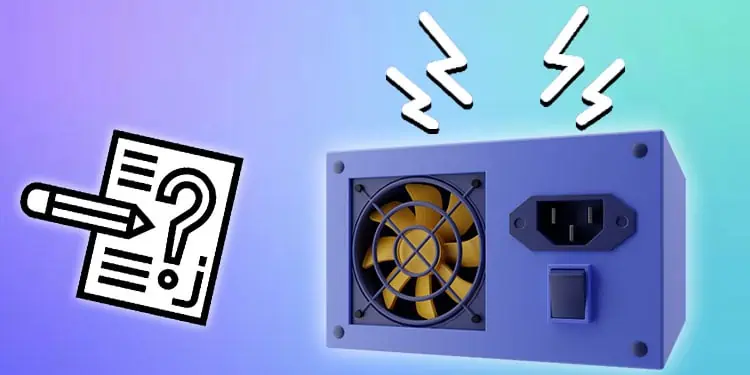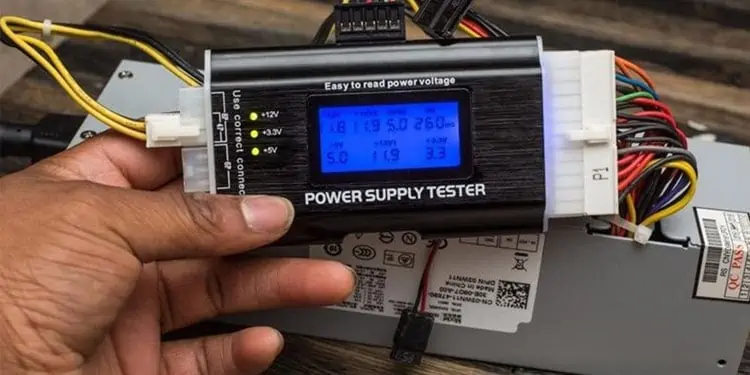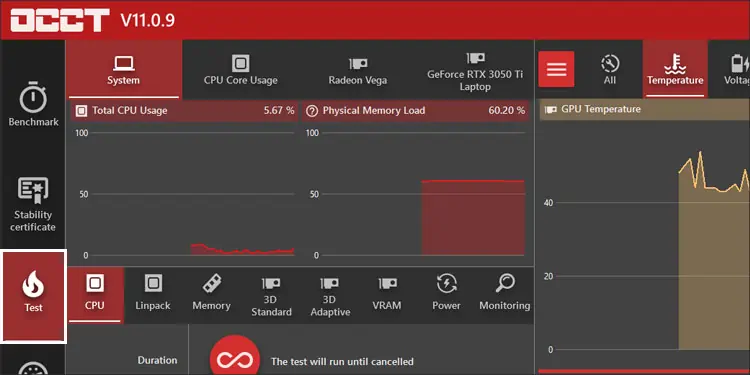Your power supply unit is the workhorse of your computer that interacts with every powered component you install – which means you need it to work right. One way to check whether the parts you install in your computer are working as they should is to stress test them. Doing so means you can rest assured that every piece can deliver the performance it promises. If you haven’t stress-tested your PSU, try it sooner rather than later.
What Exactly is a Stress Test?
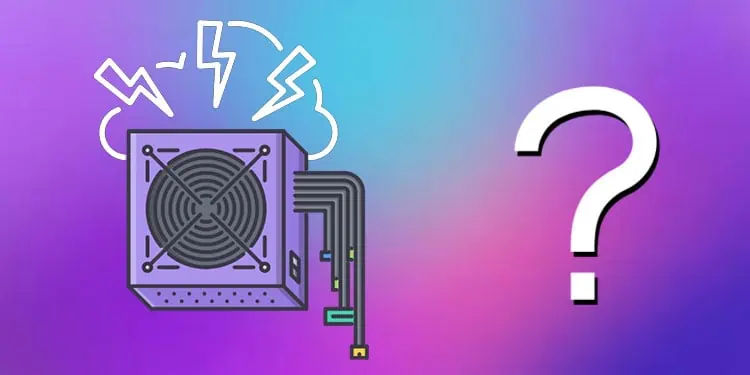
A stress test is one way to check the functionality of your computer components. It lets you know that even when your computer runs at its highest performance, each part can keep up its end of the bargain.
Many people stress test their GPUs and CPUs when overclocking, for example. By pushing them to run hot and fast, they can see what kind of performance they offer under pressure.
Sometimes a stress test might feel a little stressful. It can push your computer to shut down, Bluescreen, or run in a way that doesn’t feel smooth. This is a sign that the component you’re testing isn’t holding up to the stress and might need to operate at a lower level.
Why Do I Need to Stress Test My PSU?
Your PSU is one of the essential parts of your computer. Without it, nothing else in the PC functions. There are a few things you need to be able to count on the PSU to do.
- The PSU needs to be able to deliver uninterrupted power. Sometimes, running hard and hot can make it less likely to provide what’s needed quickly and evenly. Testing it in advance can give you an idea of how much it can handle before it stops working correctly.
- The PSU needs to be able to operate at a specific temperature. When you do a stress test, the PSU might shut down if it gets too hot. Luckily, most models are so good at mitigating their heat that the intake fan doesn’t turn on most of the time. However, it’s a consideration. If your PSU can’t handle the heat during a power spike, you may need to replace it.
- The PSU needs to deliver the amount of power it promises. When you purchase a power supply unit, there is a guaranteed amount it can handle. Before buying, you are supposed to calculate how much power you need for each component in your build. The PSU needs to equal – and preferably exceed – that amount. Stress testing the PSU will show you that it’s giving you the power you need, even when each component runs fast.
- The PSU may be required to do more if you plan to overclock. Before starting an overclock that requires more voltage, stress test your PSU to make sure it can handle everything on high, to begin with. If it can’t, you’ll have to consider getting another PSU before embarking on an overclock.
- The PSU might be experiencing a hardware error. If you see or hear signs of a problem, consider testing the PSU.
There are lots of good reasons to stress test your PSU. If you haven’t done it before, try it out. Since there’s minimal risk involved, there’s no reason not to give it a shot.
How to Stress Test Your PSU ?
Stress testing your PSU ensures it can provide enough power even when the components request the maximum amount. These tests will push your computer and make it run hotter. Be sure your fan settings are prepared, and the computer is clean before you start. You want to test it in the optimum environment, and the temperatures matter quite a bit.
Use a PSU Tester
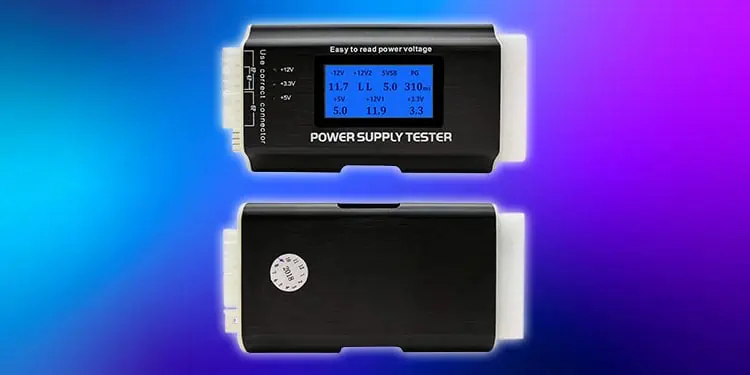
You can buy tools to test the PSU independently of the computer. This is the best option if you’re checking whether a unit is functional and what kind of power delivery it offers. It’s also great if you regularly test power supply units and want a quick, easy way to do so without stressing your other components.
- Unplug your power supply from your computer completely.
- Plug your power supply into the wall. Flip the switch on the back to make sure it’s operable.
- Plug the power supply 24-pin connector into the PSU tester.
- Read the output that tells you whether it’s operable. Some models will also have an LCD screen that gives you more information about the power output.

- Test the other power connectors if your purchased unit has plugins for your CPU interface, GPU interface, and HDD plugs. You should be able to read the output voltage on the screen or with the lit LED buttons.
You should be able to read the instructions to see whether it has an indicator if the unit fails. Sometimes, the LED light color might change, or the unit could emit a buzzing sound. If those indicators show up, you need to replace your PSU.
Use OCCT
OCCT is a tool designed to test your hardware so you know it’s working at the level it needs to. Most tools like this aren’t intended for PSUs and don’t have settings to test them appropriately. However, OCCT does have a place to try a power supply and should be your first stop when using a software test.
- Install OCCT. Once you’ve downloaded the program, follow the steps to install it on the computer with the PSU you want to test.
- Select Test from the left pane.

- Choose Power with a lightning bolt symbol and a circle with arrows around it from the options in the center.
- Choose Auto from the instruction set option.
- Choose a duration. You can run the test for a defined number of minutes or hours – or you can choose to let it run until you end it. When I tested it, I let it run for one minute. However, you may get more information if you let it run for longer.

- Click the Start button.
- Wait for the ad to play, and then click the Start button again to begin the test. If you’ve purchased the software, this step may not be necessary.
You can read through the panels on the right to see how the PSU performed during the test. You want to see power delivered in stable curves and no enormous spikes when you look at the voltage monitor’s readings taken during the test.
Manually Test With Other Components
Another way to stress test your PSU is to really put it through the wringer and run your GPU and CPU at their highest possible levels. When you do this, you’re calling on the PSU to work harder and deliver more power.
The hardest part of this process is finding something that will push your GPU and CPU to their maximum settings. You want to put the PSU under enormous stress in this way. A great way to make them work harder is to stress test those components and watch the performance of the PSU during their trial.
- Choose a PSU monitor that you can watch during the stress test. I personally use OCCT since I already have it installed, and it monitors the voltage. You also want to have a temperature monitor up on your screen.
- Choose a GPU stress test. There are many different choices; some are better than others, depending on what you want to test. Check whether there’s a stress test recommended by your GPU manufacturer, or just use one you’re already comfortable with.
- Choose a CPU stress test. The same considerations apply as with the GPU test. Anything you’re comfortable using will work fine.
- Start up the GPU stress test. Make sure you set it to run for long enough to do the rest of the steps.
- Start up the CPU stress test. Set it to run for at least a few minutes.
- Watch the voltage monitor and the general performance of your computer. Check whether the voltage spikes or the temperatures start to climb beyond what’s safe.
If the voltage stays steady and your computer’s performance is good, it’s a successful test, and the PSU works just fine.
Use a Demanding Video Game
If you have a video game that gives your CPU and GPU a workout, you can use that to monitor your PSU. One computer tech I spoke to when writing this article suggested just that, saying he often uses GTA V or Crysis, depending on the client’s computer.

Stressing the PSU is only about making it work hard. The way to do that is to make your other components work hard.
While the game is set to the maximum graphics and physics settings, do things that create stress on your computer. Watch a PSU monitor and a temperature monitor during this to see whether the voltage is stable and the temperatures are safe. If everything is working, your PSU is likely good to go.
Do I Absolutely Have to Stress Test My PSU?
If you aren’t having problems with how your computer runs, it probably isn’t necessary to stress test your PSU. Unless you want to know whether it can handle an overclock, great temperatures and performance should signal that things are working as required.
However, knowing how to do it will come in handy when you inevitably face a computer issue or feel ready for an upgrade.

